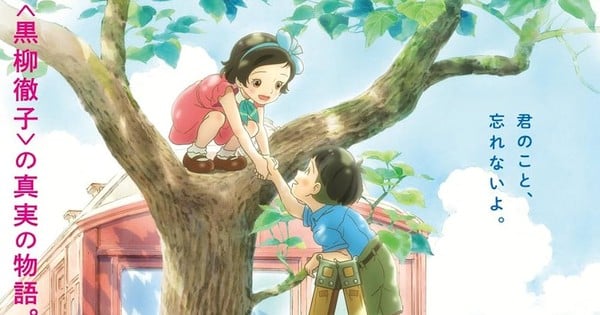Curated From www.animenewsnetwork.com Check Them Out For More Content.
Totto-Chan: The Little Girl at the Window is the story of three people. The first is the titular Totto-chan herself. In a society where everyone, even children her age, is expected to “read the room” and follow any number of unspoken rules, she eagerly does whatever pops into her head at any given moment. While her father and mother love her, they are worried about her and don’t quite know how to handle her. It’s not until she meets Mr. Kobayashi, the principal of Tomoe Gakuen, that she finds someone who can understand her.
Mr. Kobayashi is one of those rare people who truly knows the hearts of children. In his first meeting with Totto-chan, he listens to her talk for literal hours—to put to words every thought in her head—until she finally asks the actual question at the core of her being: “Why am I a bad kid?” And for the first time, she has someone tell her that she’s not—and truly means it.
Mr. Kobayashi is a man fighting against a society that has decided to write certain children off because they’re “too problematic.” He has created a haven for those who don’t fit in—be it physically or mentally. He knows that while some children need structure, others need the opposite—they need a place where they can be free to explore whatever interests them. In his school, teachers are not there to try and force knowledge into their students’ heads but rather to explain anything and everything they desire.
But Mr. Kobayashi is only half of what begins to heal Totto-chan’s young soul. The other half is Yasuaki, a boy with polio who is unable to use one of his arms and one of his legs. He is a kind boy who quietly accepts that he will be left out of many things—even though it’s clear that it pains him deeply. Through her interactions with Yasuaki, Totto-chan looks outside of herself and her spur-of-the-moment interests. She learns about empathy and putting others first—and, in the process, helps Yasuaki experience things he’d never dreamed of being able to do.
And then, in the background of this collection of highly emotional stories, history marches on. Slowly but surely, we see the effect on Totto-chan’s upper-middle-class Tokyo family as the war begins and then continues to its inevitable conclusion. Through the eyes of a child, we can see the subtle effects of war—candy machines becoming empty, her lunches slowly becoming less healthy, and the steady increase of more and more injured men in uniform. It’s heartbreaking and also a great example of visual storytelling at its finest.
While the film looks great normally—as bright and vibrant as the world should look through Totto-chan’s eyes—we are granted several peeks into Totto-chan and Yasuaki’s imagination. In these scenes, the art style completely changes and becomes a masterclass in surreal animation. These scenes elevate the film to an entirely different level. As for the aural side, the music works hard to play on your feelings—ensuring you feel Totto-chan’s mood at every moment. And to cap things off, the film’s ending theme, “Anone” by Aimyon, is an emotional earworm in its own right.
Overall, Totto-Chan: The Little Girl at the Window is as beautiful as it is moving. It’s easy to see why the original book was the best-selling novel of all time in Japan upon its original release and why it dramatically changed the career of its author, actress Tetsuko Kuroyanagi—the real-life Totto-chan. It’s got fantastic characters, a powerful message about childhood education, and a unique exploration of the consequences of war through a child’s eyes. You will laugh, you will cry, and, in the end, you’ll be glad you took the time to watch this movie.

